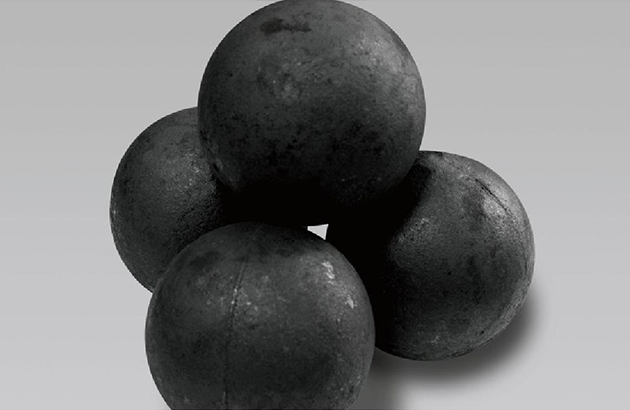
+86 0563-4309002
+86 17705630058
vickyw@gaoxincn.com
How Energy-Saving Grinding Balls Reduce Operating Costs
Unlocking Efficiency, Minimizing Waste, and Boosting Long-Term Profitability
Grinding is a foundational process in heavy industries like mining, cement production, thermal power generation, and metallurgy. Whether reducing ore size for mineral extraction or preparing raw materials for cement production, grinding operations demand significant energy—often accounting for up to 50% of total power consumption in processing plants. As energy costs rise and sustainability pressures mount, the need for more efficient solutions becomes urgent.
This is where energy-saving grinding balls come into play. Designed to optimize energy transfer during milling, these specialized grinding media help industrial operators cut energy consumption, reduce maintenance, and lower total cost of ownership. This article explores how energy-saving grinding balls deliver measurable financial and operational benefits across different industrial environments.
Grinding processes are inherently energy-intensive. Mills consume electricity to rotate, accelerate grinding media, and reduce particle sizes. Traditional grinding balls often lack uniform hardness, deform easily under impact, and generate excessive heat through inefficient friction—all contributing to higher energy draw.
Energy-saving grinding balls, however, are engineered to optimize performance by improving:
Impact efficiency
Contact area with material
Trajectory inside the mill
Wear resistance and ball shape retention
These grinding balls are typically made from high-grade forged steel, high-chromium cast iron, or specially formulated alloy compositions. What sets them apart is their:
High surface hardness (≥60 HRC)
Uniform core hardness
Excellent impact toughness
Optimized spherical geometry
Heat-treated microstructure for reduced deformation
Such features ensure that the balls transfer more kinetic energy to the material instead of being absorbed internally or lost as frictional heat.
Energy-saving grinding balls reduce power usage in two main ways:
Efficient energy transfer: The ball's mass, density, and hardness allow for more effective particle breakage with less energy input.
Improved mill dynamics: Stable trajectories and consistent spacing between balls promote a cascading motion that minimizes dead zones and material re-circulation.
This leads to lower kilowatt-hours per ton of processed material—directly reducing electricity costs.
Longer service life means less frequent media replacement. Energy-saving balls resist spalling, chipping, and flat-spot wear, which are common with standard balls.
Cost-saving effects:
Fewer shutdowns for ball replacement
Reduced procurement and logistics costs
Lower mill liner wear due to fewer fragmented particles
High-quality grinding media maintain their shape and effectiveness over longer periods, leading to:
More stable milling cycles
Reduced maintenance frequency
Higher equipment uptime
Downtime translates into lost production. A more durable ball directly increases operating hours and plant throughput.
Efficient grinding balls reduce over-grinding, produce more uniform particles, and eliminate energy waste due to excessive fragmentation.
Industrial benefits:
Better flotation efficiency in mining
Improved cement strength and setting in construction
Reduced need for secondary classification or regrinding
By improving product quality and consistency, industries avoid reprocessing costs and achieve higher end-product value.
These grinding balls are used in multiple mill types across several industries:
Ball and SAG mills used for ore reduction
Target materials: copper, gold, iron ore, nickel
Grinding goals: maximum mineral liberation with minimal energy
Finish mills and raw mills for reducing clinker and raw materials
Enhanced grindability of cement results in higher quality and lower power per ton
Used to grind coal into fine powder
Helps ensure complete combustion and improved boiler efficiency
Applied in grinding of slags, silicates, and chemical compounds
Critical for controlled reactivity and particle morphology

| Feature | Standard Grinding Balls | Energy-Saving Grinding Balls |
|---|---|---|
| Wear rate | High | Low |
| Hardness consistency | Uneven | Uniform |
| Energy efficiency | Poor | Optimized |
| Service life | Shorter | Extended |
| Mill uptime | Interrupted | Stable |
Energy-saving performance is not accidental; it's engineered into the material itself:
High Carbon Forged Steel: Offers toughness, crack resistance, and stability.
High Chromium Cast Iron: Combines hardness with chemical resistance for dry grinding.
Custom Alloys: Used in high-temperature or corrosive environments for added durability.
Heat treatments such as quenching and tempering are applied to ensure an ideal hardness gradient—hard surface for wear resistance and tough core for impact durability.
Across multiple industry reports, companies adopting energy-saving grinding balls report:
10–25% reduction in energy use per ton of output
20–40% increase in media lifespan
30–50% fewer mill shutdowns annually
5–15% increase in overall plant throughput
These numbers add up over months and years, especially in high-tonnage operations running continuously.
Energy-saving grinding balls not only lower operating costs but also support environmental goals:
Reduced CO? emissions due to lower energy demand
Less steel waste from media consumption
Improved resource efficiency through optimized grinding
As ESG (Environmental, Social, Governance) standards grow in importance, energy-saving technology aligns with compliance strategies.
Evaluate current energy usage, wear rate, and ball performance to benchmark baseline performance.
Select ball materials that match the abrasiveness, hardness, and reactivity of the feedstock.
Use a mix of ball sizes for efficient grinding: large balls for breaking coarse particles and smaller ones for refining fines.
Track energy consumption, production output, and ball wear to measure the ROI of the switch.
Research and development efforts are driving the next generation of grinding balls:
Smart grinding media with embedded sensors for real-time wear tracking
Eco-alloys with lower carbon footprints
Nano-engineered surfaces for friction optimization
AI-driven media selection systems based on ore data
These innovations will further reduce operating costs and environmental impact while improving reliability and precision.
In a world where energy costs continue to rise and industrial operations face mounting pressure to reduce waste and emissions, energy-saving grinding balls offer a compelling advantage. They are not only tools for crushing and pulverizing but strategic assets that drive down operating expenses and improve sustainability.
Comment
(0)